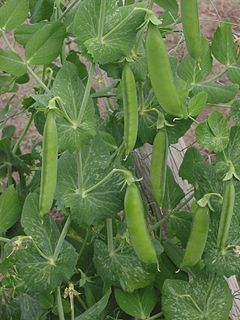Annual plant: Difference between revisions
m Reverted edits by 198.237.17.14 (talk) to last version by ClueBot |
|||
| Line 21: | Line 21: | ||
Although they are often considered to be weeds in gardens, this viewpoint is not always necessary, as most of them die when the soil temperature warms up again in early to late spring when other plants are still dormant and have not yet leafed out. |
Although they are often considered to be weeds in gardens, this viewpoint is not always necessary, as most of them die when the soil temperature warms up again in early to late spring when other plants are still dormant and have not yet leafed out. |
||
Even though they do not compete directly with cultivated plants, sometimes winter annuals are considered a pest in commercial agriculture, because they can be hosts for insect pests or fungal diseases (ovary smut - Microbotryum sp) which attack crops being cultivated. Ironically, the property that they prevent the soil from drying out can also be problematic for commercial agriculture. |
Even though they do not compete directly with cultivated plants, sometimes winter annuals are considered a pest in commercial agriculture, because they can be hosts for insect pests or fungal diseases (ovary smut - Microbotryum sp) which attack crops being cultivated. Ironically, the property that they prevent the soil from drying out can also be problematic for commercial agriculture.hello poopy head |
||
==See also== |
==See also== |
||
Revision as of 20:01, 3 March 2008

Botanically, an annual plant is a plant that usually germinates, flowers and dies in one year. True annuals will only live longer than a year if they are prevented from setting seed. Some seedless plants can also be considered annuals even though they do not flower.
In gardening, annual often refers to a plant grown outdoors in the spring and summer and surviving just for one growing season. Many food plants are, or are grown as, annuals, including most domesticated grains. Some perennials and biennials are grown in gardens as annuals for convenience, particularly if they are not considered cold hardy for the local climate. Carrot, celery and parsley are true biennials that are usually grown as annual crops for their edible roots, petioles and leaves, respectively. Tomato, sweet potato and bell pepper are tender perennials usually grown as annuals.
Ornamental annualer perennials commonly grown as annuals are impatiens, wax begonia, snapdragon, Pelargonium, coleus and petunia. Some biennials that can be grown as annuals are pansy and hollyhock.
One seed-to-seed life cycle for an annual can occur in as little as a month in some species, though most last several months. Oilseed rapa can go from seed-to-seed in about five weeks under a bank of fluorescent lamps in a school classroom. Many desert annuals are termed ephemerals because their seed-to-seed life cycle is only a few weeks. They spend most of the year as seeds to survive dry conditions.
Examples of true annuals include corn, lettuce, pea, cauliflower, watermelon, bean, zinnia and marigold.
Summer annuals
Summer annuals sprout, flower and die within the same spring/summer/fall. The lawn weed, crabgrass, is a summer annual.
Winter annuals
Winter Annuals are plants that have an annual life span but tend to germinate in the fall or winter and bloom in late autumn/fall, winter or early spring. The plants grow and bloom during the cool season when most other plants are dormant or other annuals are in seed form waiting for warmer weather to germinate. Winter annuals die after flowering and setting seed, the seeds wait to germinate until the soil temperature is cool again in the fall or winter. Winter annuals typically grow low to the ground, where they are usually sheltered from the coldest nights by snow cover, and make use of warm periods in winter for growth when the snow melts. Some common winter annuals include henbit, deadnettle, chickweed, and winter cress. Winter annuals are important ecologically, as they provide vegetative cover that prevents soil erosion during winter and early spring when no other cover exists and they provide fresh vegetation for animals and birds that feed on them.
Although they are often considered to be weeds in gardens, this viewpoint is not always necessary, as most of them die when the soil temperature warms up again in early to late spring when other plants are still dormant and have not yet leafed out. Even though they do not compete directly with cultivated plants, sometimes winter annuals are considered a pest in commercial agriculture, because they can be hosts for insect pests or fungal diseases (ovary smut - Microbotryum sp) which attack crops being cultivated. Ironically, the property that they prevent the soil from drying out can also be problematic for commercial agriculture.hello poopy head
